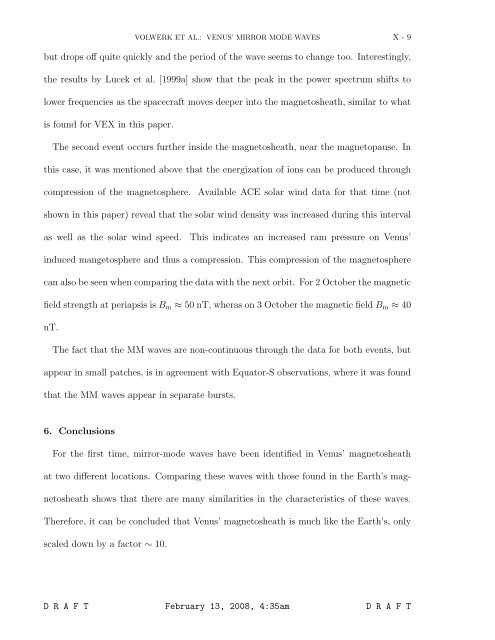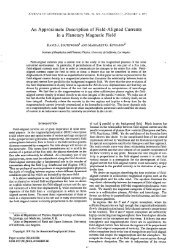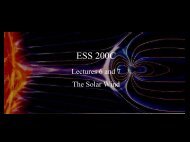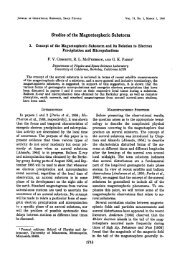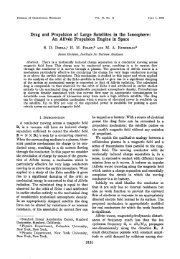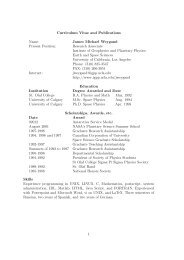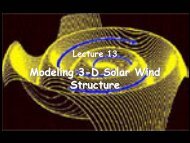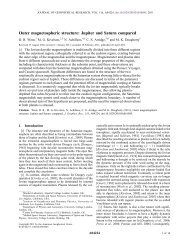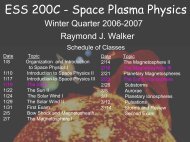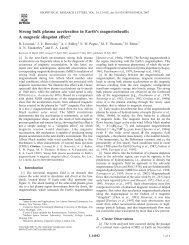First identification of mirror mode waves in Venus' magnetosheath?
First identification of mirror mode waves in Venus' magnetosheath?
First identification of mirror mode waves in Venus' magnetosheath?
You also want an ePaper? Increase the reach of your titles
YUMPU automatically turns print PDFs into web optimized ePapers that Google loves.
VOLWERK ET AL.: VENUS’ MIRROR MODE WAVES X - 9but drops <strong>of</strong>f quite quickly and the period <strong>of</strong> the wave seems to change too. Interest<strong>in</strong>gly,the results by Lucek et al. [1999a] show that the peak <strong>in</strong> the power spectrum shifts tolower frequencies as the spacecraft moves deeper <strong>in</strong>to the <strong>magnetosheath</strong>, similar to whatis found for VEX <strong>in</strong> this paper.The second event occurs further <strong>in</strong>side the <strong>magnetosheath</strong>, near the magnetopause. Inthis case, it was mentioned above that the energization <strong>of</strong> ions can be produced throughcompression <strong>of</strong> the magnetosphere. Available ACE solar w<strong>in</strong>d data for that time (notshown <strong>in</strong> this paper) reveal that the solar w<strong>in</strong>d density was <strong>in</strong>creased dur<strong>in</strong>g this <strong>in</strong>tervalas well as the solar w<strong>in</strong>d speed.This <strong>in</strong>dicates an <strong>in</strong>creased ram pressure on Venus’<strong>in</strong>duced mangetosphere and thus a compression. This compression <strong>of</strong> the magnetospherecan also be seen when compar<strong>in</strong>g the data with the next orbit. For 2 October the magneticfield strength at periapsis is B m ≈ 50 nT, wheras on 3 October the magnetic field B m ≈ 40nT.The fact that the MM <strong>waves</strong> are non-cont<strong>in</strong>uous through the data for both events, butappear <strong>in</strong> small patches, is <strong>in</strong> agreement with Equator-S observations, where it was foundthat the MM <strong>waves</strong> appear <strong>in</strong> separate bursts.6. ConclusionsFor the first time, <strong>mirror</strong>-<strong>mode</strong> <strong>waves</strong> have been identified <strong>in</strong> Venus’ <strong>magnetosheath</strong>at two different locations. Compar<strong>in</strong>g these <strong>waves</strong> with those found <strong>in</strong> the Earth’s <strong>magnetosheath</strong>shows that there are many similarities <strong>in</strong> the characteristics <strong>of</strong> these <strong>waves</strong>.Therefore, it can be concluded that Venus’ <strong>magnetosheath</strong> is much like the Earth’s, onlyscaled down by a factor ∼ 10.D R A F T February 13, 2008, 4:35am D R A F T


